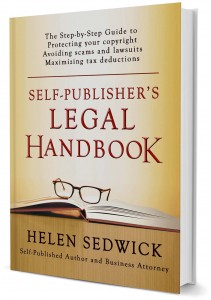
From Skitterphoto.com under CC license
Creative Commons is one of the best innovations to grow out of global interconnectivity.
Under copyright law, rights to use copyrighted materials are granted on a one-by-one basis. Traditional copyright law does not provide a practical way to permit wide-ranging use of copyrighted work. Creative Commons stepped in to fill this gap.
Creative Commons is a non-profit organization that has developed a set of off-the-shelf licenses for use by copyright holders who wish to make their work widely available for limited or unlimited purposes. To quote the Creative Commons website, “Our tools give everyone from individual creators to large companies and institutions a simple, standardized way to grant copyright permissions to their creative work.”
There are currently six basic Creative Commons licenses, each with its own icon, set of rights, and limitations. All require you to give attribution (credit) to the copyright owner by name and preferably with a link. Here are the attribution guidelines.
If you want to use the image or content for commercial purposes, look for one of these licenses.
- Attribution (You may alter the content.)
- Attribution-No Derivatives (You may not alter the content.)
- Attribution-ShareAlike (You may alter the content as long as your make your altered content available under the same Creative Commons license.)
If you want to use the image or content for non-commercial purposes only, then also look for one of these licenses.
- Attribution-NonCommercial (You may alter the content.)
- Attribution-NonCommercial-No Derivatives (You may not alter the content.)
- Attribution-NonCommercial-Share Alike (You may alter the content as long as your make your altered content available under the same Creative Commons license.)

Donated to public domain by AllAnd on Flickr
Creative Commons also provides an icon for designating that a work has been donated to the public domain with “No Rights Reserved.”
HOW DO WRITERS USE CREATIVE COMMONS LICENSES?
As the Licensor: If you want to put the world on notice that a certain expression, let’s say your blog, is available for copying and modification, mark your blog with the appropriate Creative Commons mark. The Creative Commons site has a simple questionnaire to help you determine the correct license.
As a Licensee: If you are searching for images, content, or other expression for your use, the Creative Commons site provides links to some of the larger databases for images and other content, including Flickr, Al Jezeera, Wikipedia, and the White House.
Google Images has a tool for sorting images by usage rights. Other sites that offer free images under Creative Commons’ licenses include MorgueFile, Stockvault, Openphoto, Freeimages, and Skitterphoto.com
No matter which site you use, be sure to click on tabs reading Terms of Use or License and review the restrictions. Choose the license that covers all your intended uses, such as commercial and derivative. Some of these free images are limited to non-commercial uses.
One warning about using Creative Commons images containing people or featuring another copyrighted work, such as a painting, poster, or sculpture: You have no reliable way of determining whether the photographer obtained releases from the people in the image or permission to use the underlying art. Do not rely on the Creative Commons license if there are recognizable faces or artwork in the image.
If you want to use an image showing a person, then create your own (with the appropriate releases) or purchase a stock image from one of the larger companies. They provide an assurance that the appropriate releases and permissions were obtained (and, in addition, they have deeper pockets to pay for lawsuits should they be wrong).
SHARE THIS




